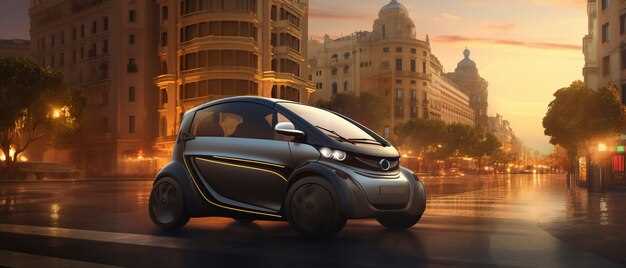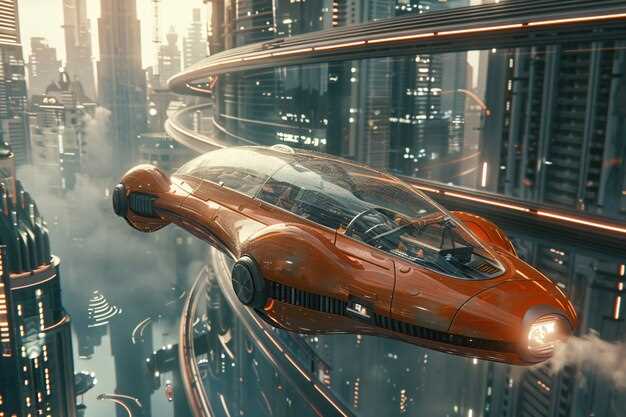If you crave astounding performance and green technology, consider the Tesla Model S Plaid. This powerhouse rockets from 0 to 60 mph in just 1.99 seconds, boasting a top speed of 200 mph. Its tri-motor setup delivers a staggering 1,020 horsepower, while the impressive range of about 390 miles ensures you won’t compromise on practicality for speed.
Next on the list is the Porsche Taycan Turbo S, which showcases a perfect blend of luxury and speed. Achieving 0-60 mph in 2.4 seconds, it rivals the Model S with a top speed of 261 mph. The Taycan also impresses with a well-crafted interior and state-of-the-art technology, appealing to driving enthusiasts seeking both performance and comfort.
For those who prefer a unique design, the Rimac Nevera stands out with its futuristic aesthetics. This electric hypercar accelerates from 0 to 60 mph in just 1.85 seconds and reaches a remarkable top speed of 258 mph. With 1,914 horsepower, it makes a bold statement on the road while featuring advanced tech to enhance the driving experience.
Consider the Lucid Air Dream Edition if you value range alongside speed. It travels 0-60 mph in 2.5 seconds and features a top speed of 168 mph. The Lucid Air excels in electric range, achieving up to 503 miles, making it a solid option for those who want more than just acceleration.
Understanding the Criteria for Top Speed Electric Cars
To identify top speed electric cars, focus on multiple key factors: motor power, battery capacity, aerodynamics, and weight. High-performance motors, typically measured in kilowatts (kW), directly influence acceleration and maximum speed. Look for cars with motor outputs exceeding 500 kW for truly impressive performance.
Battery capacity, expressed in kilowatt-hours (kWh), affects both range and power delivery. High capacity allows for sustained performance under high speeds without premature power loss. Models with at least 100 kWh batteries provide a good balance between speed and range.
Aerodynamics plays a critical role in minimizing drag. Sleek designs reduce wind resistance, enabling better high-speed performance. Features like active spoilers or diffusers can enhance stability at top speeds, so check for these enhancements in the design.
Weight impacts acceleration and handling. Lighter cars often achieve higher speeds due to improved power-to-weight ratios. Explore options that incorporate lightweight materials, like carbon fiber, to optimize speed while maintaining structural integrity.
Finally, tire technology cannot be overlooked. High-performance tires improve grip and stability, essential for maximizing speed and control. Seek vehicles with dedicated performance tires that can withstand high speeds and provide optimal traction.
By considering motor power, battery capacity, aerodynamics, weight, and tire technology, you can confidently evaluate which electric cars may offer the best top speed available on the market.
Comparing Acceleration Times of Leading Models
The Tesla Model S Plaid boasts an impressive 0-60 mph time of just 1.99 seconds, solidifying its reputation as one of the fastest electric cars available. This performance comes from its tri-motor setup, delivering unmatched torque and power.
The Rimac Nevera takes acceleration to another level, achieving the same 0-60 mph milestone in 1.85 seconds. Its four electric motors allow for remarkable handling and responsiveness, making it a standout in acceleration performance.
Ford Mustang Mach-E GT offers a 0-60 mph time of 3.5 seconds, which is exceptional for a compact SUV. The electric powertrain ensures swift acceleration, appealing to those who desire performance alongside practicality.
The Porsche Taycan Turbo S excels with a stunning 0-60 mph time of just 2.4 seconds. This car combines luxury with speed, showcasing the capabilities of a high-performance electric sedan.
For a more affordable option, the Hyundai Ioniq 5 achieves 0-60 mph in 5.0 seconds. It balances speed with everyday usability, making it an attractive choice for electric vehicle buyers seeking both performance and value.
Comparing these acceleration times highlights the impressive capabilities across different models. Each car provides a distinctive approach to acceleration, catering to various preferences and budgets.
Exploring the Latest Technologies in Electric Drive Systems
Electric drive systems now feature remarkable technologies that enhance performance and efficiency. Switching to silicon carbide (SiC) semiconductors significantly improves power conversion efficiency, leading to increased range and faster charging times.
The introduction of dual-motor all-wheel-drive systems allows for precise torque vectoring, enhancing traction and responsiveness. This technology adapts to driving conditions in real time, ensuring optimal handling and stability on various terrains.
- Regenerative braking captures energy during deceleration, converting it back into usable battery power. This system maximizes efficiency and extends driving range.
- Heat pump technology improves climate control inside the vehicle while reducing energy consumption, ensuring a comfortable driving experience even in extreme weather.
- Smart battery management systems monitor battery health and optimize charging cycles, prolonging battery life and maintaining performance levels.
Solid-state batteries are on the horizon, offering higher energy density and faster charging times compared to traditional lithium-ion batteries. This breakthrough could lead to lighter vehicles with extended ranges.
Many manufacturers now integrate advanced driver-assistance systems (ADAS) with electric drive systems, enhancing safety and efficiency. Features such as adaptive cruise control and lane-keeping assist work together seamlessly, providing a smoother driving experience.
To maximize performance, automotive engineers focus on lightweight materials such as carbon fiber and aluminum in vehicle design. This reduces overall weight, compensating for the weight of heavy battery systems and improving acceleration and efficiency.
Ongoing investments in fast-charging infrastructure promise to make long-distance travel in electric vehicles more accessible. High-capacity chargers can replenish batteries significantly faster, encouraging wider adoption.
Every innovation in electric drive systems contributes to the evolution of high-performance electric cars. Keep an eye on these technologies when considering your next vehicle purchase.
Evaluating Real-World Range vs. Top Speed Performance
Real-world range and top speed performance serve different purposes in the electric vehicle (EV) experience. Prioritize these metrics based on your needs, whether for daily commuting or thrilling drives. For example, while the Rimac Nevera boasts a staggering top speed of 258 mph, its range tops out around 340 miles. If you want to maximize driving distance on a single charge, consider models like the Tesla Model S Long Range, which achieves 405 miles while sacrificing some speed at 155 mph.
Establishing a balance between these factors proves essential. High-performance cars may compromise range for speed, which could limit long road trips. The Lucid Air offers a great compromise, featuring a blistering 1680 hp and a real-world range of approximately 500 miles. This combination caters to performance enthusiasts who don’t want to compromise on distance.
Data shows consumers frequently prioritizing range over speed in everyday use. A tendency exists to charge vehicles overnight at home while questing after the longest possible distances. Hence, exploring charging infrastructure and available supercharging options adds extra value. Car buyers considering the Porsche Taycan should look into its range of 227 miles at maximum speed, alongside fast charging capabilities, making it practical for longer travels.
Here’s a breakdown of popular models comparing their maximum speeds and ranges:
| Model | Top Speed (mph) | Real-World Range (miles) |
|---|---|---|
| Rimac Nevera | 258 | 340 |
| Tesla Model S Long Range | 155 | 405 |
| Lucid Air | 1680 | 500 |
| Porsche Taycan | 161 | 227 |
Evaluate your driving habits and preferences. If occasional speed thrills excite you, balancing your choice with sufficient range ensures many fun-filled trips, hassle-free.
Analyzing Price Points of High-Performance Electric Cars
Consider the Tesla Model S Plaid starting around $114,990. With astonishing 0-60 mph acceleration in under 2 seconds, this car delivers both speed and luxury. Its high-tech features and long-range capability make it a compelling option.
Porsche Taycan Turbo offers a thrilling performance at a price of approximately $150,900. This vehicle combines German engineering with impressive handling, proving that electric can indeed be exhilarating while boasting a refined interior loaded with tech.
If you’re looking for an excellent balance of price and performance, the Ford Mustang Mach-E GT stands out at about $61,600. This SUV delivers an engaging driving experience and practicality without breaking the bank.
For those interested in a more exclusive choice, the Lucid Air Dream Edition enters the market at around $169,000. This luxury sedan raises the bar with a 503-mile range and exceptional performance metrics, appealing to those who want luxury and innovation.
Another exciting contender, the Rimac Nevera, commands approximately $2 million, entering hypercar territory. With 1,914 horsepower, it appeals to those seeking uncompromising performance and uniqueness in the EV space.
Choosing the right vehicle involves balancing performance desires with budgetary constraints. Each model offers distinct advantages, ensuring there’s a high-performance electric car to suit various preferences and financial plans.
Identifying Upcoming Models to Watch for Speed Enthusiasts
The Rimac Nevera stands out with its astonishing 1,914 horsepower and a 0-60 mph time of just 1.85 seconds. This Croatian hypercar not only boasts speed but also cutting-edge technology, making it a must-watch for any speed enthusiast.
Ford’s upcoming all-electric Mustang Mach-E 2023 promises impressive performance figures. Its GT variant offers a 0-60 mph sprint in around three seconds, combining Mustang’s legacy with electric responsiveness that will excite fans.
The Tesla Roadster 2023 aims to redefine electric car performance with a staggering top speed of over 250 mph. With a 0-60 mph time of 1.1 seconds, it positions itself as one of the fastest production cars available, adhering to Tesla’s reputation for innovation.
Porsche is introducing the Taycan Turbo S, pushing boundaries in the electric sedan segment. Featuring all-wheel drive and a 0-60 mph time of 2.4 seconds, this model showcases Porsche’s commitment to performance and luxury.
Lastly, watch for the Lotus Evija, an electric hypercar generating 2,000 horsepower. This British marvel aims for a 0-60 mph time of under three seconds, demonstrating how traditional sports car makers are venturing into the electric domain without compromising speed. Stay tuned as these models hit the market and set new benchmarks for speed enthusiasts.







